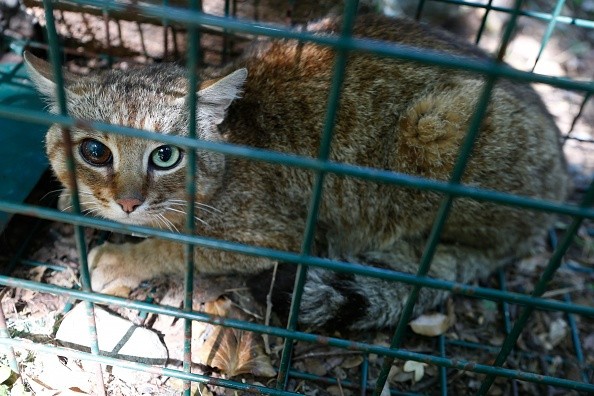Centuries ago, wildcats were nowhere to be found, but they are now back to the forests of the southern Netherlands, local conservationists revealed.

The Return of Wildcat
The wildcat possesses a flatter head and longer legs than its domestic relation, due to hunting and forest clearance this animal vanished from modern-day Dutch territories in the middle ages.
The return of wildcat, with its unique round-tipped and black-ringed tail, shows a hint of the rewilding of forests in the southern Dutch part of Limburg, as per a biologist working for the ARK conservation group, Hettie Meertens.
She said since 2013 their number has been rising in southern Limburg, as they have migrated from "saturated" habitats in the closeby Eifel mountains of Germany and the Belgian Ardennes in search of new territories.
Speaking of both numbers and the cats stretching their territory to other areas of the Netherlands, Meertens said: "The population is small but it is increasing. The situation is fragile, but we are confident in the expansion."
ARK is making plans to figure up the number of wildcats next year, this task is a difficult one and it has to do with positioning cameras on trees. Meertens places valerian oil - a scent that normally attracts the cats, on branches to make them gather under the camera lens.
Also Read : Wild Cat Brains Challenge Evolutionary Norms
Reasons for Their Return
The cats returned to the Netherlands because of the changing forest management that supports nature and not harvesting wood. Wilder forests contain trees that have already fallen and hollow spaces on which these animals like to rest.
Conservationists have also been urging farmers to cultivate "cat-kind" hedgerow in their land to provide a home for the small rodents - voles - that the cats prey on.
A weasel-like mammal, Pine martens, also came back to the forests in the region since 2015. Meertens said: "The ecosystem is complete with the carnivores. They represent the wild forest and that is very important."

Features of Wildcat
Wildcat - species Felis silvestris - is a little wild member of the cat family (Felidae) and is endemic to Eurasia and Africa. This animal has three to five subspecies.
The European wildcat (Felis silvestris silvestris), the nominate subspecies, lives in forested areas from Scotland through continental Europe to western Asia.
It is almost the same as the domestic cat but possesses a larger, flatter head, longer legs, and a full, relatively short tail that ends in a rounded tip. Its covering coat is yellowish gray with dark lines and bands in the lined tabby pattern; wildcat's tail is black-ringed.
The matured wildcat is 20 to 32 inches (50 to 80 cm) long, minus a 10- to 14-inch (25- to 35-cm) tail; it stands 14-16 inches (35-40 cm) tall at the shoulder and weighs from 6.6 to 22 pounds (3 to 10 kg).
Related Article : New Brazilian Wild Cat Species Revealed by Genetic Testing
For more news, updates about wildcats and similar topics don't forget to follow Nature World News!
© 2026 NatureWorldNews.com All rights reserved. Do not reproduce without permission.





